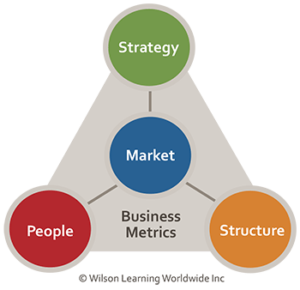Pat was not happy as she left the meeting with a long-term customer—now a former customer.
“Pat, we have done business together for a long time,” her customer started, “but we have decided to go in a different direction this time.” The customer went on to say how ABC Company, one of Pat’s biggest competitors, worked with them to integrate ABC’s solution into the customer’s systems, resulting in faster inventory turns with fewer shipping errors, and they were able to demonstrate how this will increase margins and profit for the customer.
The ABC Company’s salesperson sold value.
Everything Has Changed, Yet Nothing Has Changed
Salespeople and sales managers are struggling.
Some have been rendered almost frozen, under the false belief that everything has changed about selling and they don’t know what to do. What had brought them confidence is now a source of anxiety and concern.
Others seem to be operating under the false assumption that nothing has changed. They believe there is no need to change their behavior or learn new skills, but then they struggle upon discovering that many of the old ways of doing things are no longer effective and they don’t understand why.
At stressful times, salespeople, and sales managers, need to reach inside themselves and rediscover the reasons they went into sales—to connect back to the values of the profession and the rewards that come from it, and yes, it is a lot more than just the money.
Selling to Value (S2V) refers to a distinct approach to selling that focuses on aligning your offering to the business value it creates for the customer. This approach requires the sales practitioner to develop an ever-expanding mindset and skill set—and it requires a commitment to a purpose that goes beyond self-interest to include both the interest of the individual customer and the interests of that customer’s business organization.
S2V needs to be considered in all aspects of the sales process: prospecting, qualifying, contacting, proposing, and closing a sales opportunity. But Selling to Value has the greatest impact on how a salesperson discovers needs. Discovering needs is at the very heart of the selling to value relationship. When done correctly, it has a profound effect on the customer’s understanding of their business and where they can generate growth.
Traditional Discovery
In a more traditional sales process, discovery is focused on gathering information about customers’ needs. The salesperson asks good questions; the prospect/customer provides relevant answers. This inquiry proceeds until needs that can be met by the features of the products or services of the selling organization are clearly understood by the salesperson. At that point, the salesperson enters into a discussion of how the features of their products or service meet or exceed the discovered needs of the customer organization. In short, the salesperson explains to the customer how to solve a business problem.
On the surface, there is nothing wrong with this needs-based selling approach; millions of salespeople use it successfully every day. Unfortunately, since almost every salesperson follows this process, your product gets compared to competitors’ products feature by feature. This parity makes it extremely difficult for both the customer and the salesperson to distinguish amongst competing solutions and may confuse the customer into inaction. Therefore, while a traditional discovery process is necessary, it is not sufficient.
Traditional needs discovery ignores additional sources of value that can be brought into consideration. At its core, S2V is a thorough consideration of how the customer organization creates value for its customers. In the S2V approach, the salesperson brings a broader understanding of the customer’s business context into an exploration of the business impact of their decision.


 The Business Needs Identification approach provides an organizing structure to guide the exploration of how the customer organization produces value. The company’s ability to produce value for its customers is influenced by five major elements.
The Business Needs Identification approach provides an organizing structure to guide the exploration of how the customer organization produces value. The company’s ability to produce value for its customers is influenced by five major elements.